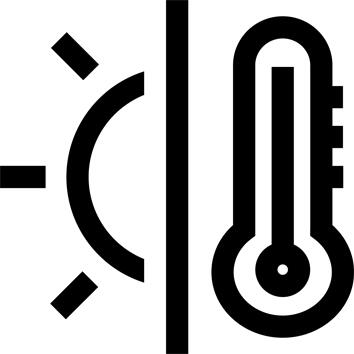Resistance
Reinforced knees for greater resistance.
External reinforcement patches are placed at sensitive points.
To reinforce the joints, they are braided at sensitive points.
Melco taped: internal reinforcement of seams at sensitive points.
Sealed seams with GBS glued/sewn assembly.
The seams of the wetsuit and hood are watertight, assembled using GBS (Glued and Blind Stitched): the neoprene is first glued, then stitched for maximum strength (the needle does not go all the way through the neoprene to prevent water infiltration).
Details for thermal insulation.
LongJohn wet neoprene 5 MM on the chest.
4 MM on the upper legs.
Once the water film is trapped between your body and the pants, there is no water circulation and therefore no water renewal.
On the inside of each leg there is a small skirt ( inner stop water ) to prevent water circulation and the transfer of tempered water from the body to the outside.
Multi Thickness
The wetsuit has 5 MM of neoprene on the bust.
The upper legs 4 MM, the rest of the legs in Supratex 3 MM and 2.5 MM.
This multi-thickness provides the necessary comfort and ergonomics for canyoning.
Tips for maintaining your canyoning wetsuit?
1/ After each session, soak the suit in clear water on the outside and inside
2/ Use a bactericidal solution to sanitize
3/ Rinse well in clear water
4/ Dry on a wide hanger in a shaded, well-ventilated area. Beware of the sun, as it discolors the textile parts of the suit.
What is a wet suit?
This is the most common type of wetsuit on the market. Its purpose is not to act as a barrier to water, but rather to trap it and allow your body to warm it up, creating a thermal buffer between you and the outside world.
Made from neoprene - a rubber polymer filled with air bubbles - these suits come in thicknesses from 0.5 to 7 mm .
As such, they make excellent wetsuits because they are flexible and modular.
Choosing the right size
To get the most out of your wetsuit, you need to choose the right size. A canyon wetsuit should fit snugly, with no visible creases. When dry, it's normal to feel too tight, but this discomfort disappears as soon as the suit gets wet. If you choose a wetsuit that's too big, creases will form, chafing will occur and thermal insulation will be reduced (water ingress).
Stay warm
When we're in the water, it's through our extremities (feet, hands, head) that we lose more than half our body heat.
We therefore recommend the following accessories:
- in warm and temperate water (>17°C) => neoprene socks 3 MM
- in cold water (12 - 17°C): gloves 3 MM
- in very cold water (7 - 12°C): neoprene vest, gloves and balaclava.
Find all our accessories on decathlon.fr
Limiting water ingress
The ends of the ankles have silicone stoppers that limit water entry.
They also provide better support when using booties.














